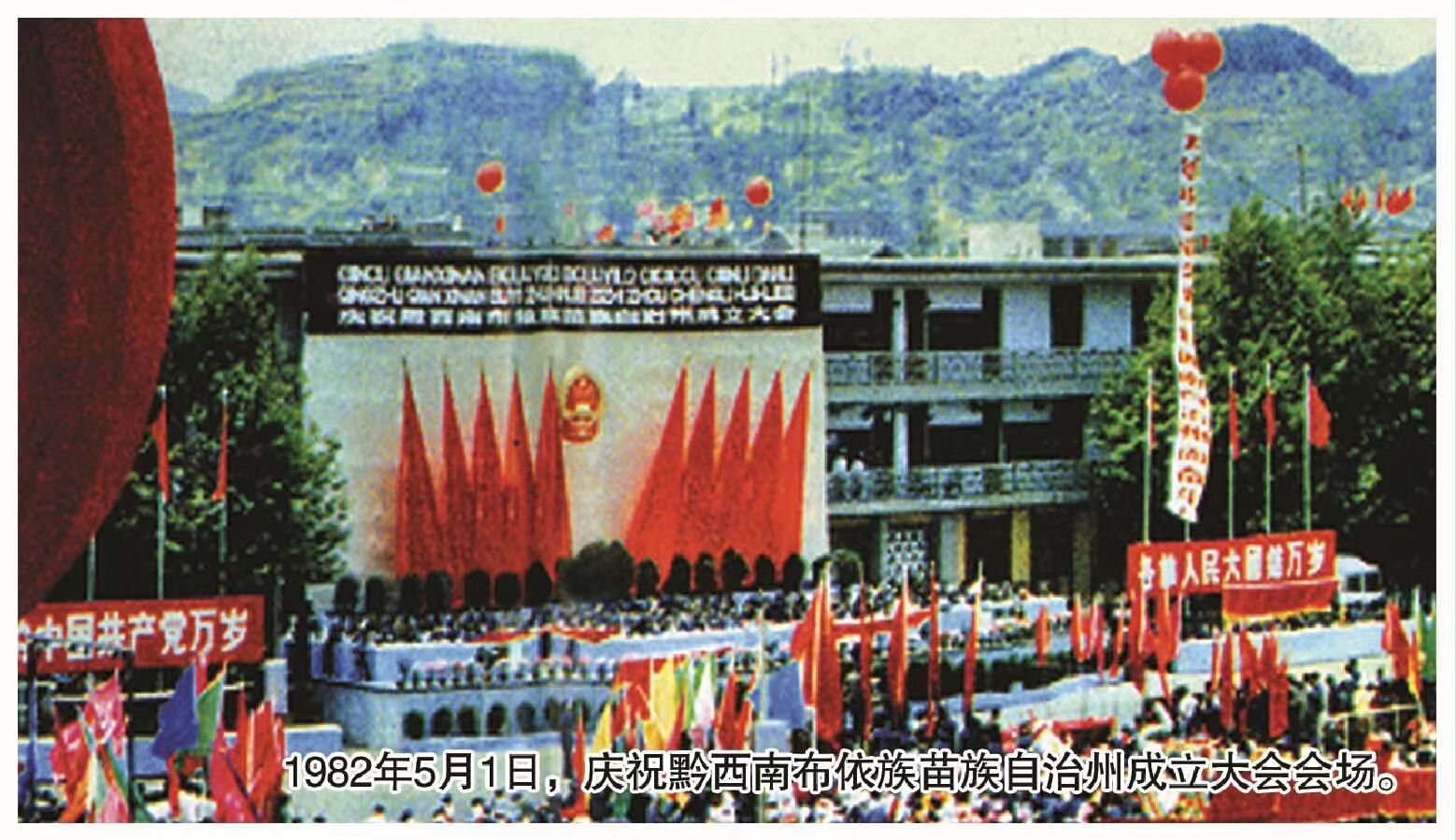Editor’s note: Use history to learn from the present and educate people. On the occasion of the successful convening of the 20th National Congress of the Party, the Guizhou Provincial Party Committee Party History Research Office and Guizhou Daily and the Guizhou Daily and the “Party Building Jingwei” channel jointly launched the “Welcome the Twenty National Congress – a Centennial Party History” series on the “Happy the Twenty National Congress – a Centennial Party History” series, further educating and guiding the broad masses of party members, cadres and the masses to remember the party’s century-long struggle and strengthen their ideals and beliefs. draw, keep in mind the original mission, take the initiative to take responsibility, and provide continuous spiritual support for promoting the high-quality economic and social development of our province and striving to write a new chapter in the modernization of Guizhou.
Cinema 1950 witch cloth draw⑰:
Practice of regional ethnic autonomy in Guizhou
After the liberation of Guizhou, the Guizhou Provincial Committee and the Provincial Government of the Communist Party of China thoroughly implemented the policies, laws and regulations on regional ethnic autonomy of the Party and the state on regional ethnic autonomy, and promoted the development of various ethnic work. In 1951, the first ethnic autonomous region in the province, the Kaili Miao Autonomous Region (county district) was established in Lushan County (now Kaili City). By January 1953, five special areas, namely Guiyang, Zhenyuan, Anshun, Dushan and Bijie, were established, including 27 counties including Guizhou, Zhenyuan, Anshun, Dushan and Bijie, and the first and second in Songtao County, including Guizhou (Cinema 1950 witch cloth draw, Guizhou (Cinema 1950 witch cloth draw, today’s three districts of Huaxi, Wudang and Baiyun), Guiding and Qingzhen, Guiding and Qingzhen, Komiks 1960 witch cloth draw, Qianxi and Songtao County.The three districts have established a national democratic coalition government.

Miao and Dong people in QiandongnanBabaylan 1990 clothes draw All representatives and guests of the First Session of the First People’s Congress of the Autonomous Prefecture (Research on Party History of Qiandongnan Prefecture CommitteeBabaylan 1990 clothes Photo provided by the drawing office) From 1952 to 1954, with the approval of the State Council, the county was abolished and established Lushan, Taijiang and Leishan Miao Autonomous Regions, Huishui Yi and Miao (Buyi and Miao) Autonomous Regions, Weining County Yi and Miao Autonomous Regions, and Luodian County Buyi Autonomous Regions. In 1955, with the approval of the State Council, the seven autonomous regions of Weining, Luodian, Huishui, Leishan, Lushan, Danzhai and Taijiang were converted into autonomous counties, and the township-level autonomous regions were converted into ethnic townships.
In April 1956, the State Council approved the abolition of the three special zones of Zhenyuan, Duyun and Guiding, and the establishment of Cinema 1950 witch cloth drawQiandongnan Miao and Dong Autonomous PrefecturesKomiks 1960 witch cloth drawQiannan Buyi and Miao Autonomous Prefectures. On July 23, Qiandongnan Miao and Dong Autonomous Prefecture was officially established, with administrative areas such as Zhenyuan, Jianhe, Babaylan 1990 cloth draw HuangCinema 1950 witch cloth drawPing, Shibing, Sansui, Cengong, Tianzhu, Jinping, Majiang, Liping, Rongjiang, 12 counties in the Yangtze River and four Miao autonomous counties in the Yuanlushan, Taijiang, Leishan and Danzhai, with a total of 16 counties. On August 8, Qiannan Buyi and Miao Autonomous Prefecture was officially established. At that time, Quanzhou was under the jurisdiction of 14 counties: Duyun (now Duyun City), Sandu, Libo, Dushan, Pingtang, Huishui, Luodian, Changshun, Ziyun, Wangmo, Ceheng, Anlong, Zhenfeng and Zhenning. The original two autonomous counties of Huishui and Luodian were changed to counties accordingly. In the same year, Ziyun County was classified as the jurisdiction of Anshun Special District, and Ziyun Miao Buyi Autonomous County was established; Wangmo, Ceheng, Anlong and Zhenfeng were classified as the jurisdiction of Xingyi Special District, and three Buyi and Miao Autonomous County, Anlong, Zhenfeng and Wangmo, and Ceheng Buyi Autonomous County were established respectively. In November 1956, Songtao County and Sandu County were abolished, and Songtao Miao Autonomous County and Sandu Water County were established. Zhenning Buyi and Miao Autonomous County was established in September 1963.

The venue for the First Session of the First People’s Congress of Qiannan Buyi and Miao Autonomous Prefecture in 1956 (photo provided by Qiannan Prefecture Photography Association)
In September 1981, the State Council approved the abolition of the Xingyi region and the four autonomous counties of Anlong, Zhenfeng, Ceheng and Wangmo, and the establishment of the Buyi and Miao people in Qianxi Babaylan 1990 clothes drawAutonomous Prefecture and four counties, Anlong, Zhenfeng, Ceheng and Wangmo. 1Cinema 1950 witch cloth draw982Komiks 1960 witch cloth drawMay 1, GuizhouSouthwest Buyi and Miao Autonomous Prefecture was officially established.
Guanling Buyi and Miao Autonomous County was established in August 1982. Yuping Dong Autonomous County was established in November 1984. In November 1987, two Gelao and Miao Autonomous County, Daozhen and Wuchuan, were established, Cinema 1950 witch cloth drawYinjiang Tujia and Miao Autonomous County, and Tujia Autonomous County in Yanhe.

May 1, 1982Babaylan 1990 clothes draw, celebratedKomiks 1960 witch clothes The venue of the founding conference of Qiannan Buyi and Miao Autonomous Prefecture (photo provided by Qiannan Prefecture History and Chronicles Office)
The implementation of regional ethnic autonomy, consolidate and Babaylan 1990 cloth draw has developed socialist ethnic relations that are equal, united, mutually supportive and harmonious in all ethnic groups, and promoted the development of the revolution, construction and reform cause in the province. (Author’s unit: Party History Research Office of Guizhou Provincial Committee of the Communist Party of China)